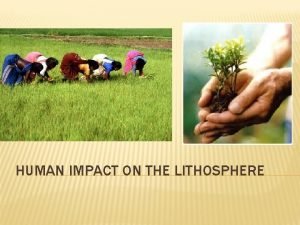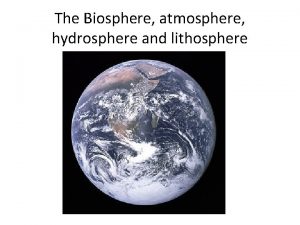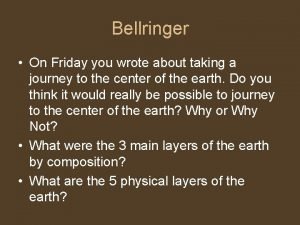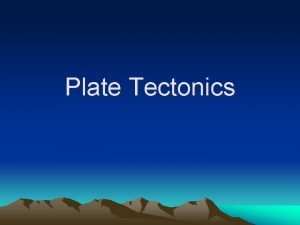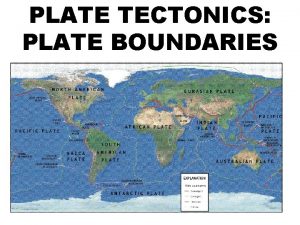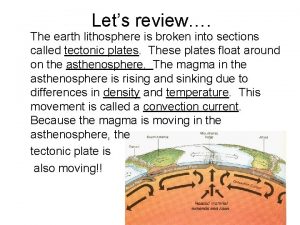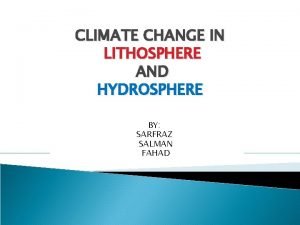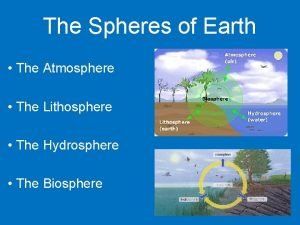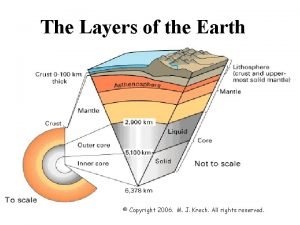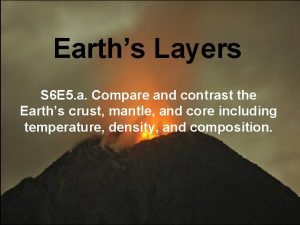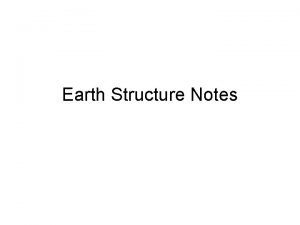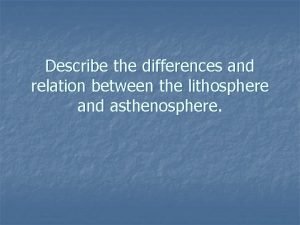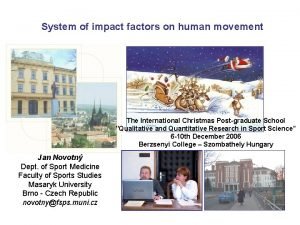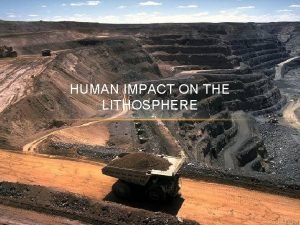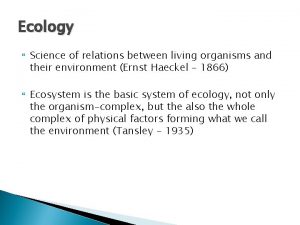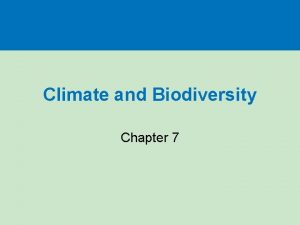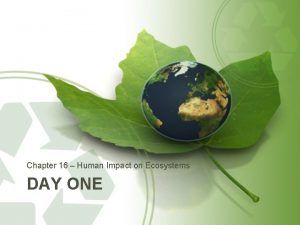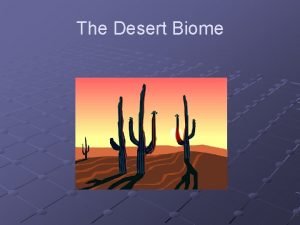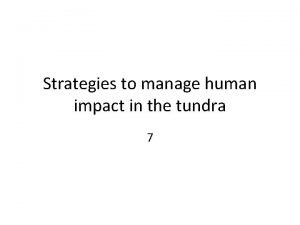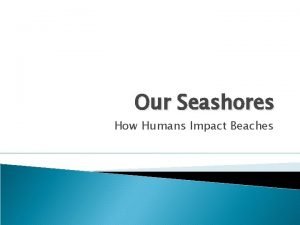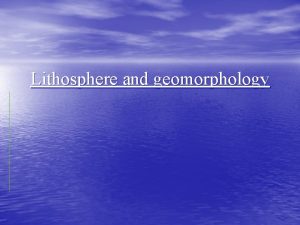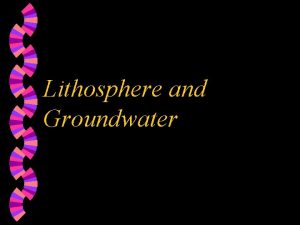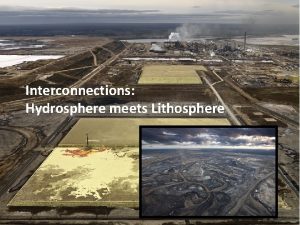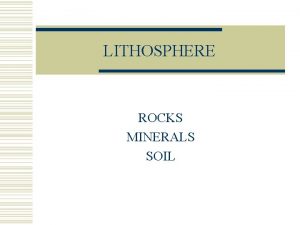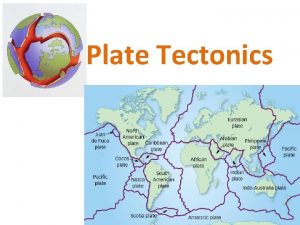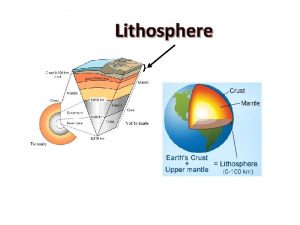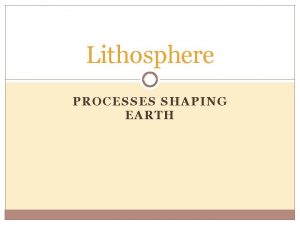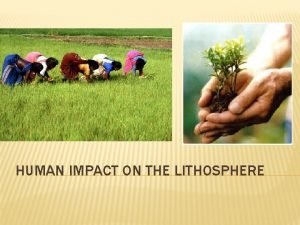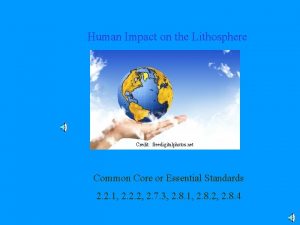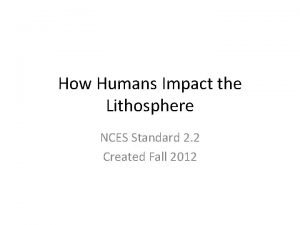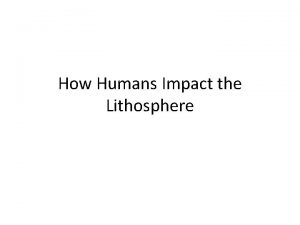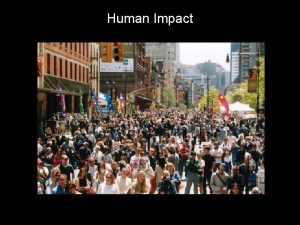HUMAN IMPACT ON THE LITHOSPHERE WHY IS THE






























- Slides: 30

HUMAN IMPACT ON THE LITHOSPHERE

WHY IS THE LITHOSPHERE IMPORTANT? Provides land/space on which to live Provides necessary resources required for survival, like food and fuel

HOW LAND USE HAS CHANGED… Over the past hundreds of years, our use of the land has changed drastically We have changed from a largely rural area to more agriculture based, and from there to more industry-based

3 MAJOR PRACTICES THAT AFFECT QUALITY OF LITHOSPHERE Deforestation Agriculture Urbanization

DEFORESTATION Forests are cut down for the purpose of building and agriculture Removing plants increases the rate of erosion, because the plant roots no longer secure the soil in one place

URBANIZATION Increasing population has led to the need for more land space for homes, resulting in use of more natural resources and limiting availability of farmland.

AGRICULTURE In addition to losing soil by deforestation, we also lose tons of topsoil each year through agriculture Topsoil is the upper, outermost layer of soil, usually the top 2 inches. It has the highest amount of organic matter and microorganisms, and is where plants obtain most of their nutrients

AGRICULTURE Traditional agriculture techniques, like plowing, remove topsoil and require replanting each year. The United States alone loses almost 3 tons of topsoil per acre per year.

Sustainability is based on a simple principle: Everything that we need for our survival and well-being depends, either directly or indirectly, on our natural environment. Sustainability creates and maintains the conditions under which humans and nature can exist in productive harmony, that permit fulfilling the social, economic and other requirements of present and future generations. Sustainability is important to making sure that we have and will continue to have, the water, materials, and resources to protect human health and our environment.

Sustainability is about treating all parties fairly. Farmers getting a fair market price for their goods, consumers paying prices reflecting reasonable profits set by producers of goods/services, workers receiving appropriate wages for the job done under safe, acceptable working conditions. All the while, the underlining concern is being responsible for our use of natural resources, being fair to the environment as well.

SUSTAINABILITY Meeting the needs of the present generation without compromising the ability of the future generation to meet their needs.


SUSTAINABLE AGRICULTURE Preserving fertile topsoil is essential to feeding the world’s rapidly growing population. This can be done through: (1) Windbreaks (2) Terracing hillsides (3) Contour plowing (4) Crop rotation

WINDBREAKS Windbreaks are located along crop field borders or within the field itself How do windbreaks help to reduce erosion rates?

TERRACING HILLSIDES Terracing is the building of wide flat rows of terraces on mountainside and hillsides. The terraces look like big staircases. They hold rainwater so that it will not wash away the soil.

CONTOUR PLOWING Instead of plowing up and down, farmers plow across a slope. In this way, the soil forms a ridge that slows down the flow of water, so soil is not carried away.

CROP ROTATION Crop rotation is the practice of growing a series of different types of crops in the same area in back to back seasons. It maintains a balance of nutrients in the soil.

EFFECT OF DEVELOPMENT ON SHORELINE Construction along the shoreline increases the rate of erosion beyond the already high rate of erosion experienced along shorelines due to the ocean.

ARTIFICIAL STABILIZATION: SHORELINE STRUCTURES Structures can be built to protect a coast from erosion or to prevent movement of sand along a beach: Groins Breakwaters Seawalls

ARTIFICIAL STABILIZATION: GROINS Groins are barriers built at right angles to the beach to trap sand that is moving parallel to the shore. Groins are built to maintain or widen beaches that are losing sand.

ARTIFICIAL STABILIZATION: BREAKWATERS Breakwaters are built parallel to the shoreline off the coast to limit the force of oncoming waves.

ARTIFICIAL STABILIZATION: SEAWALLS Structure designed to prevent impact of tides and waves on property, built directly along the shoreline.

ARTIFICIAL STABILIZATION: SEAWALLS Structure designed to prevent impact of tides and waves on property, built directly along the shoreline.

ARTIFICIAL STABILIZATION: BEACH NOURISHMENT Beach nourishment projects add large quantities of sand to the beach system. It is an attempt to stabilize shorelines without adding protective features.


BEACH NOURISHMENT: DISADVANTAGES Temporary fix; waves will eventually erode the replacement sand as well Expensive: costs lots of money to transport sand to the beach from offshore areas Negative effects on marine life: dredging sand off the coast replaces natural, coarse sand with softer, muddier sand that increases the cloudiness (turbidity) of the water and can kill offshore coral

EFFECT OF DEVELOPMENT ON MOUNTAINSIDES Construction along mountainsides can decrease the stability of the land, allowing for a greater rate of erosion. Mass movements (ex: rockslides) are more probable.

ARTIFICIAL STABILIZATION: SLOPE REVETMENT Screen mesh (called slope revetment) draped over a steep slope keeps loosened rocks from entering roadways.

ARTIFICIAL STABILIZATION: RETAINING WALLS Human activities or natural processes can remove some soil from the base of a slope, making the remaining upper part of the slope less stable and more prone to mass movement. Construction of a retaining wall can support the upper part of a slope.

ARTIFICIAL STABILIZATION: SLOPE VEGETATION While harvesting trees, leave enough mature trees to anchor the slope and protect soil from excessive erosion due to runoff.
 How do humans impact the lithosphere
How do humans impact the lithosphere Hey bye bye
Hey bye bye Hydrosphere lithosphere atmosphere
Hydrosphere lithosphere atmosphere Lithosphere ecosystem
Lithosphere ecosystem Which layers together constitute the lithosphere?
Which layers together constitute the lithosphere? Earth layers lithosphere asthenosphere mesosphere
Earth layers lithosphere asthenosphere mesosphere Two plates spread or move apart at what boundary
Two plates spread or move apart at what boundary What layers of earth make up the lithosphere
What layers of earth make up the lithosphere Lithosphere
Lithosphere The lithosphere is broken into
The lithosphere is broken into Heat-mass transfer and geodynamics of the lithosphere:
Heat-mass transfer and geodynamics of the lithosphere: Lithosphere definition
Lithosphere definition Lithosphere
Lithosphere Lithosphere
Lithosphere Atmosphere lithosphere hydrosphere
Atmosphere lithosphere hydrosphere Lithosphere
Lithosphere The 2 types of crust
The 2 types of crust Four layers of the earth
Four layers of the earth Cross section convergent plate boundary
Cross section convergent plate boundary Dont ask why why why
Dont ask why why why Five factors affecting human movement
Five factors affecting human movement Biome ex
Biome ex Human impact on agriculture
Human impact on agriculture Human impact on the phosphorus cycle
Human impact on the phosphorus cycle Human impact on terrestrial ecosystems
Human impact on terrestrial ecosystems Chapter 27 human impact on earth resources
Chapter 27 human impact on earth resources Chapter 16 human impact on ecosystems
Chapter 16 human impact on ecosystems Cold desert human impact
Cold desert human impact Chapter 16 human impact on ecosystems
Chapter 16 human impact on ecosystems Human impact in the tundra
Human impact in the tundra Human impact on beaches
Human impact on beaches
